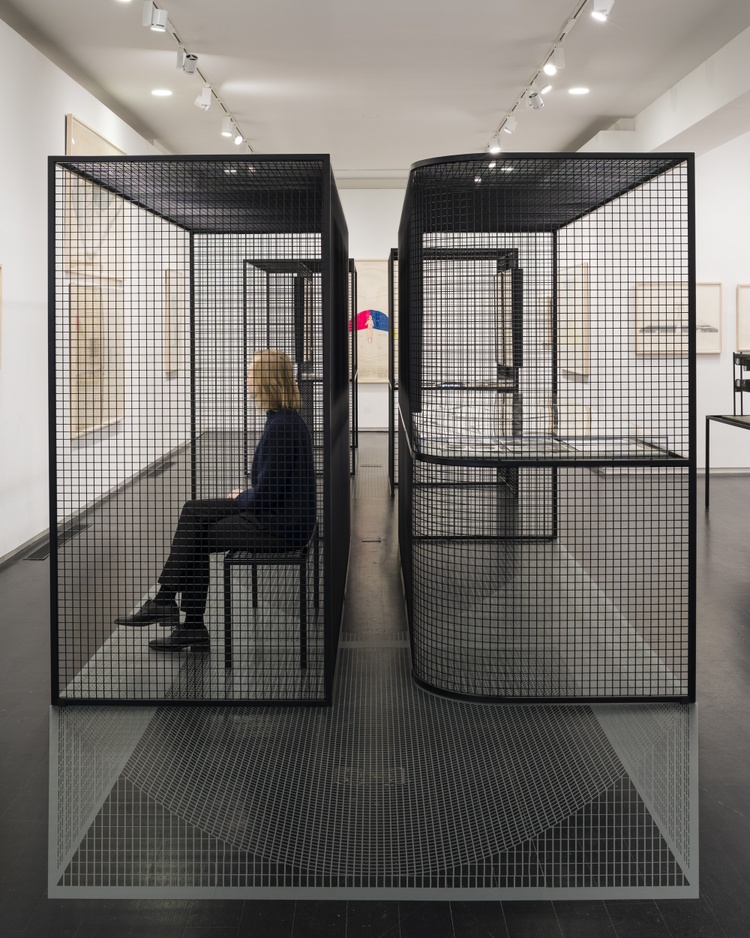
Arakawa and Madeline Gins Drawing for ‘Container of Perceiving,’ 1984 acrylic, watercolor and graphite on paper 42 ½ x 72 ¾ in. © 2018 Estate of Madeline Gins.

Arakawa and Madeline Gins Screen-Valve, 1985-87 graphite and color pencil on paper 30 x 22 ½ in. © 2018 Estate of Madeline Gins.

Arakawa and Madeline Gins Perspectival view showing entrance to ‘Bridge of Reversible Destiny,’ 1989 graphite and collage on vellum 24 x 30 in. © 2018 Estate of Madeline Gins.

Critical Holder Chart 2 (detail), c1991 / Image Credit: © 2017 Estate of Madeline Gins.

Arakawa and Madeline Gins
Screen-Valve, 1985-87
graphite and acrylic on paper
30 x 22 ½ in.
© 2018 Estate of Madeline Gins.







